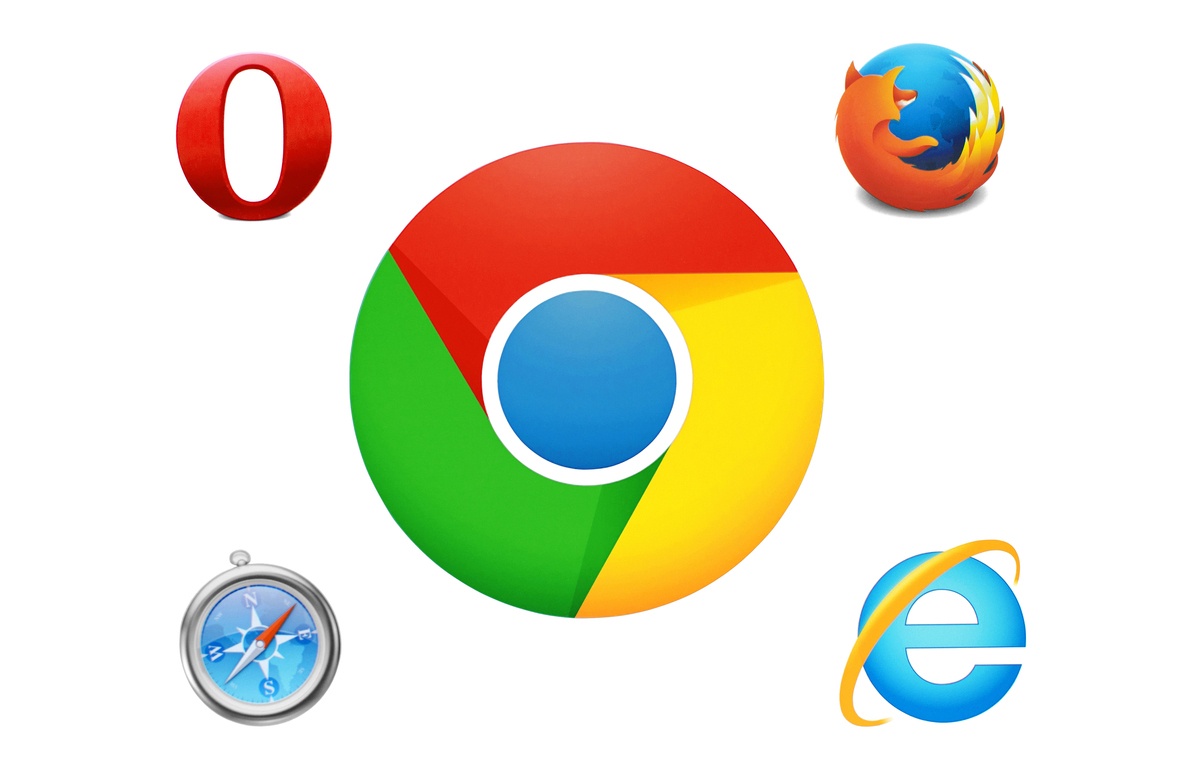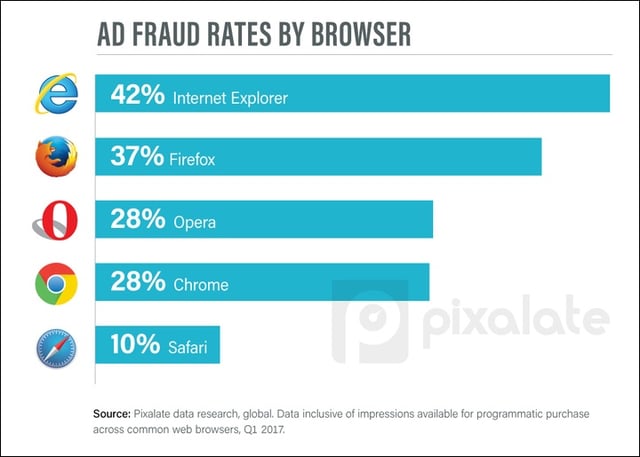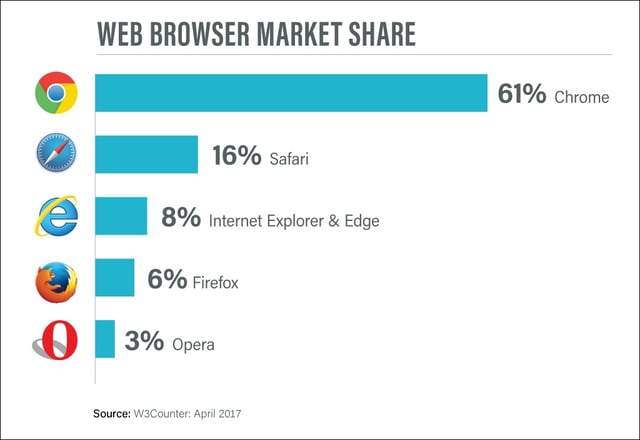
According to W3Counter, Google Chrome, Safari, and Internet Explorer are the three most popular browsers among internet users today. Combined, these three browsers command over 85% of browser share in the U.S.
But each browser — along with other popular browsers such as Firefox and Opera — is susceptible to ad fraud in its own way. This cross-device study examines Q1 2017 ad fraud rates by browser and offers explanations as to why some of the most popular browsers had drastically different ad fraud rates.

.jpg?width=640&name=Mobile-ad-fraud-rates-by-browser-v1-(1).jpg)
We see some similar trends in the mobile space with regards to ad fraud by browser type.
Safari is primarily on Mac devices, which are generally less susceptible to malware and adware. Safari also blocks third-party cookies by default, which could reduce CPMs because it inherently offers less targeting from a marketer's perspective. This could create a ripple effect that ultimately disincentivizes fraudsters from stealing on Safari.

Unsecure web pages are often targeted by fraudsters — and sometimes, the fraudsters carry out their attacks via a specific browser. Given that Chrome is used by close to two-in-three (61%) of internet users, it’s often the browser of choice for fraudsters. For example, earlier this year, Fox News reported on a malware script that targeted unsecure web pages. The attack was carried out via Chrome and targeted users in the U.S., U.K., Australia, and Canada.
Additionally, Google Chrome is home to a plethora browser extensions. These extensions are often useful tools that enhance the user’s experience with Chrome, but it also opens up the door for ad fraudsters to use extensions for their own gain.
This post is part of an ongoing series highlighting Pixalate's Quarterly Global Ad Fraud Benchmarks for Q1 2017. Sign up for our blog to learn more.
*By entering your email address and clicking Subscribe, you are agreeing to our Terms of Use and Privacy Policy.
These Stories on Mobile
*By entering your email address and clicking Subscribe, you are agreeing to our Terms of Use and Privacy Policy.
Disclaimer: The content of this page reflects Pixalate’s opinions with respect to the factors that Pixalate believes can be useful to the digital media industry. Any proprietary data shared is grounded in Pixalate’s proprietary technology and analytics, which Pixalate is continuously evaluating and updating. Any references to outside sources should not be construed as endorsements. Pixalate’s opinions are just that - opinion, not facts or guarantees.
Per the MRC, “'Fraud' is not intended to represent fraud as defined in various laws, statutes and ordinances or as conventionally used in U.S. Court or other legal proceedings, but rather a custom definition strictly for advertising measurement purposes. Also per the MRC, “‘Invalid Traffic’ is defined generally as traffic that does not meet certain ad serving quality or completeness criteria, or otherwise does not represent legitimate ad traffic that should be included in measurement counts. Among the reasons why ad traffic may be deemed invalid is it is a result of non-human traffic (spiders, bots, etc.), or activity designed to produce fraudulent traffic.”

